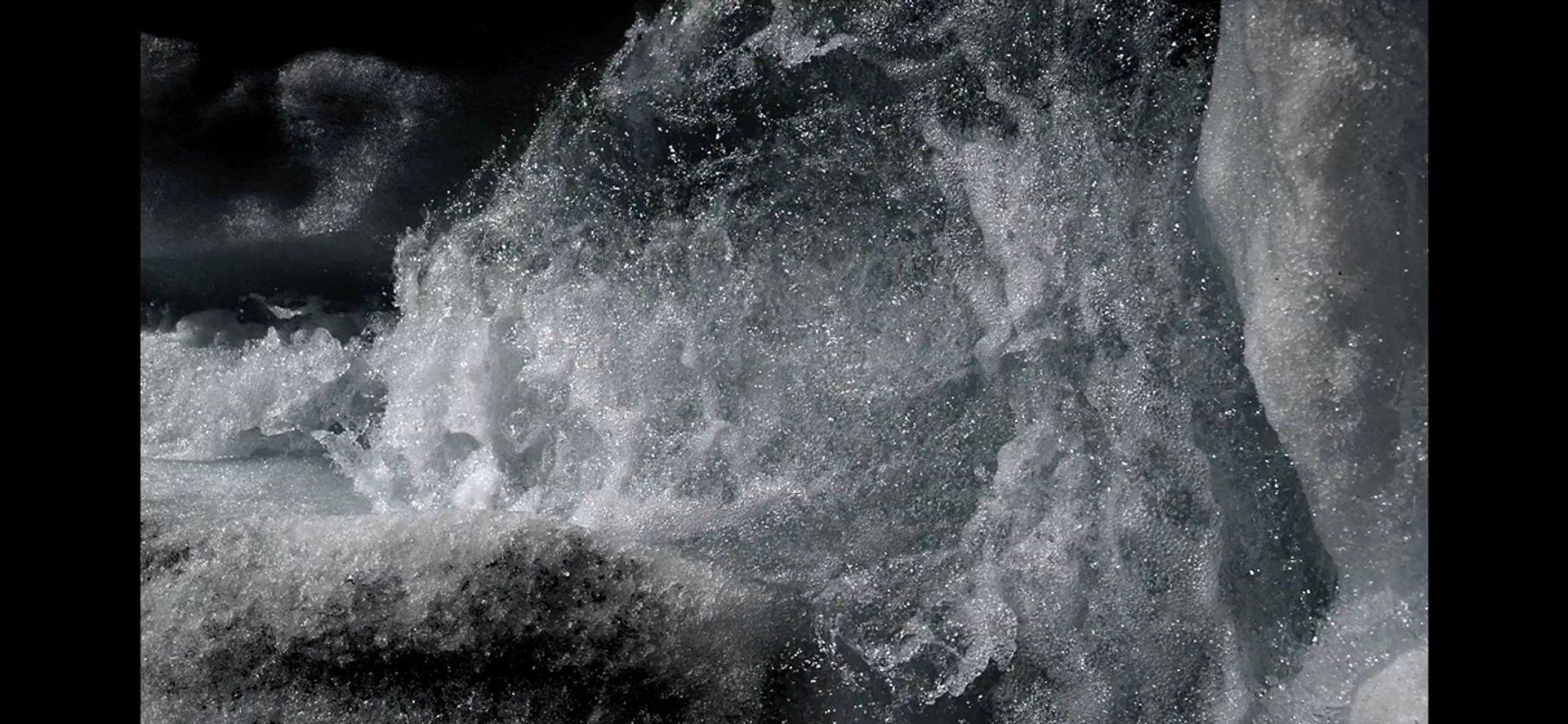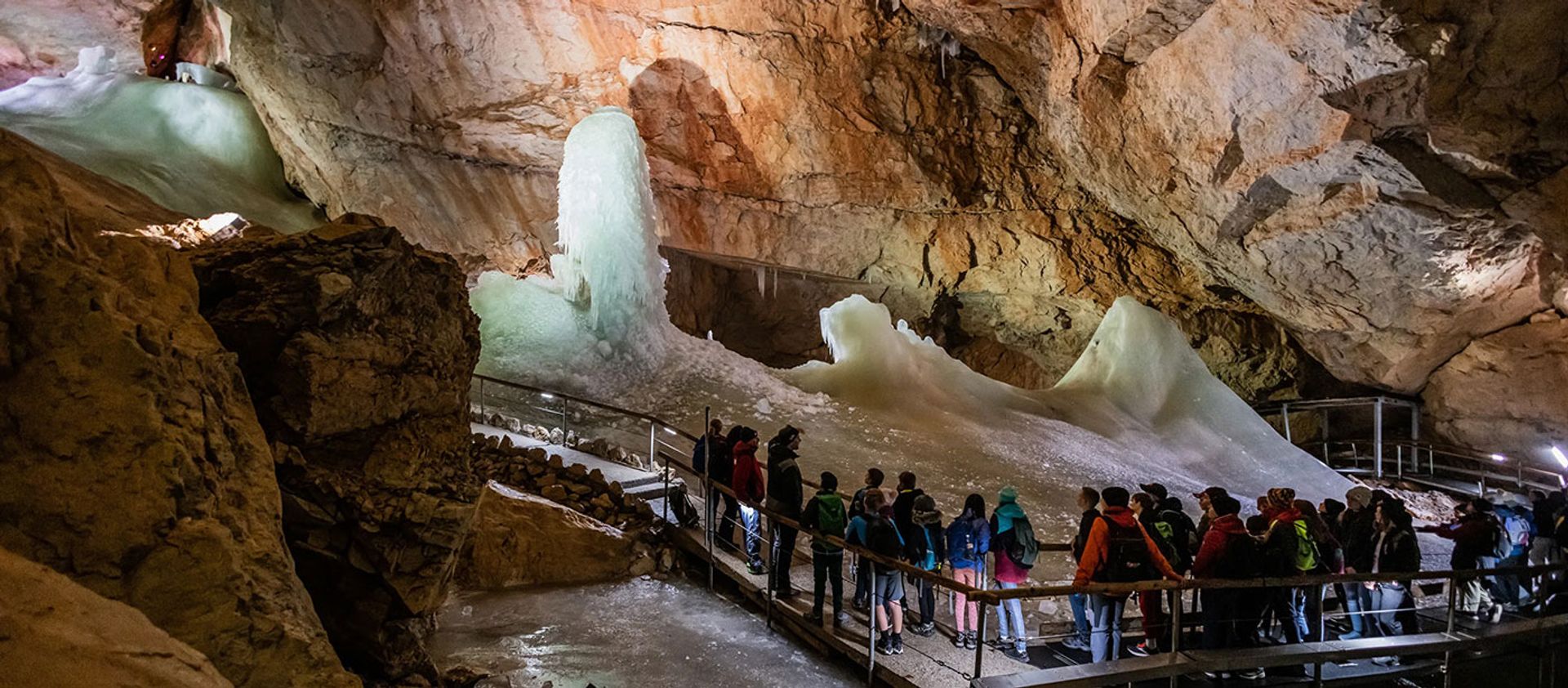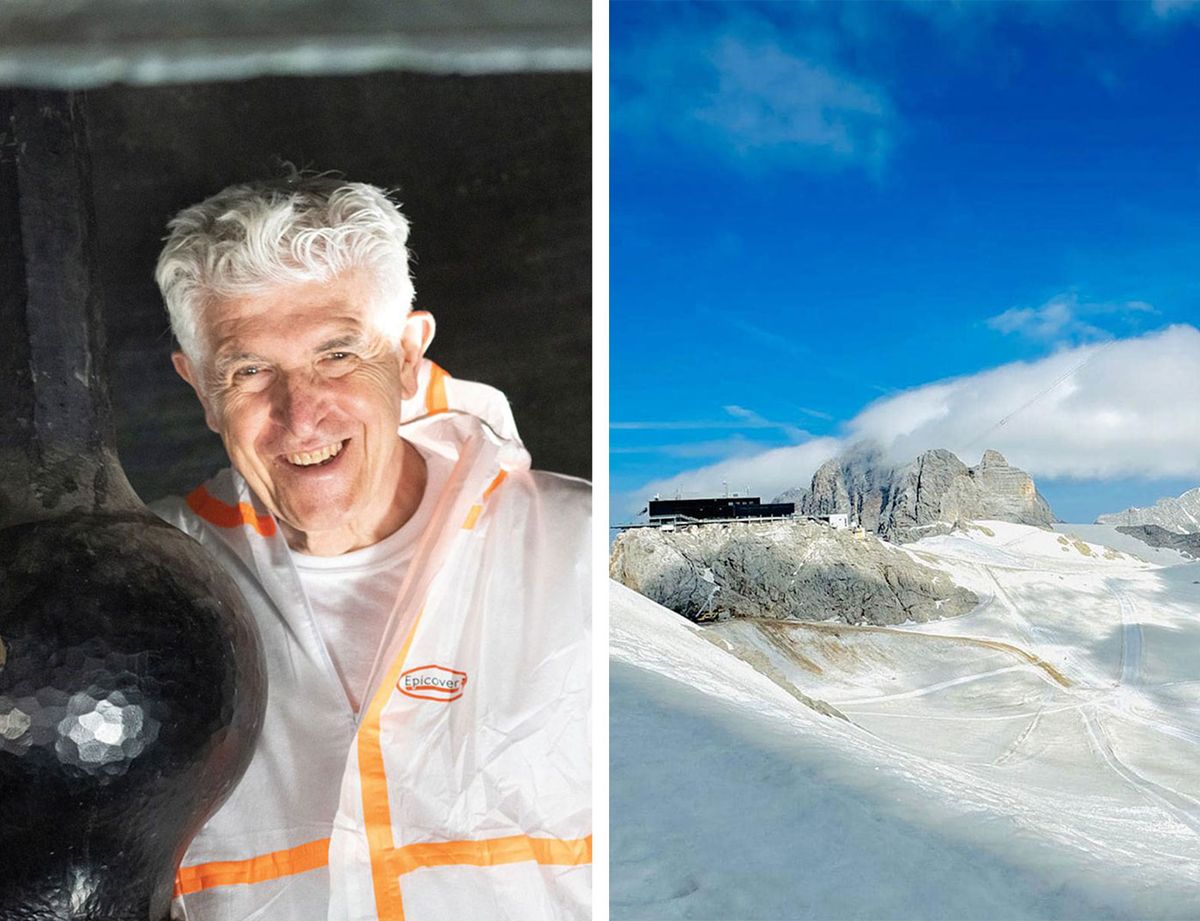In a duet of fire and ice, the sound artist Bill Fontana has mixed the echoes ringing through a flame-ravaged cathedral with the gurgles of a melting glacier for his latest installation, premiering this month in Austria and at the UCLA campus as part of Pacific Standard Time: Art & Science Collide.
The work, Silent Echoes: Notre-Dame and the Dachstein Glacier, is an expansion of a project in which Fontana installed monitors on the monumental bell of the Paris cathedral. He was invited to present the work in Austria this year as part of Ars Electronica festival, in a dramatic ice cave formed by the melting glacier that is a popular tourist attraction and performance space. Fontana agreed on the condition that he “could also give a voice to the glacier”.
To do that, he travelled to Upper Austria last September with an engineer from Ircam, the French research institute for sound and music, to record live audio from the glacier’s summit. While the surrounding landscape is visually impressive, Fontana says, the quiet stillness of the mountain top is not that sonically exciting. “What's really interesting is if you can get down inside, in the material of the glacier,” he says.
So Fontana placed accelerometers — the same kind of sensors that he has used on Notre-Dame’s bells and in many other projects — in existing cracks and crevices, as well as holes bored into the glacier. “I was just amazed at how dynamic the internal sound was,” he says. “There's so much going on, so much vibration in that glacier as it is disintegrating slowly.”
The sounds he heard were the metaphoric death rattle of the glacier, which has been losing ice at a precipitous rate in recent years, as global temperatures continue to rise. A popular ski resort on the site has closed its alpine trails for the past two years because rising temperatures, a lack of snow and newly opened crevasses made them unsafe. According to a new report by Austrian authorities, the nearby Hallstätter Glacier has lost a third of its mass since 2006, and is doomed to melt completely in the coming decades due to climate change.
“There's something kind of beautiful and tragic about getting close up to the sounds and views of this melting glacier,” Fontana says. His installation features images of rushing ice melt taken on site and audio of the water percolating through the glacier, creating a score that is meditative and poignant. “It's the sound of something dying.”

Fontana's installation includes images of rushing ice melt taken on site in the Dachstein caves, near Salzburg, in Austria Courtesy of Bill Fontana
These are paired with Fontana’s previous recordings of the sounds of Paris vibrating off the bells of Notre-Dame. Although the cathedral’s roof was completely destroyed in a blaze that broke out on 15 April 2019, the bell tower remained intact and its enormous bronze bells were undamaged. By placing accelerometers on the oldest and largest of them, known as Emmanuel, in 2021, Fontana was able to hear the steady heartbeat of the church as life continued in the city surrounding it.
And so, as the restoration of Notre-Dame nears completion, visitors who experience Fontana’s work can find solace in the revival of a man-made wonder, while mourning the death of a natural one. “I just thought it was a really interesting juxtaposition, in relation to the whole issue of climate change, to combine these two,” Fontana says.

The giant ice cave at Dachstein, in Austria, where Bill Fontana's sound installation Silent Echoes will be presented in September 2024 Courtesy of Bill Fontana
The work opens in the Dachstein Giant Ice Cave, 90km southeast of Salzburg, on 3 September, and will be available as part of the site’s audio tour until 3 November. It will also be presented at St. Mary's Cathedral in Linz (4-8 September), Kunsthaus Graz (5 September-6 October) and in the MuseumsQuartier in Vienna (6 September-20 October) as part of the regional celebrations of Bad Ischl’s selection as a 2024 European Capital of Culture.
It will then be presented by the UCLA Art|Sci Center (September 14-October 5, 2024), as part of its PST exhibition Atmosphere of Sound: Sonic Art in Times of Climate Disruption. There, the work will appear in two parts: as a two-channel installation projected on the Nimoy Theatre’s large outdoor marquee screens, and as a six-channel sound sculpture that will be heard from the Dickson Court next to Royce Hall’s south entrance. The 1929 brick and tile Romanesque-style building has two distinctive towers that, ironically, have never housed any bells. “The resonating sound of [Notre-Dame’s] bells will be this kind of harmonic sound cloud that's floating above the building,” Fontana says.


